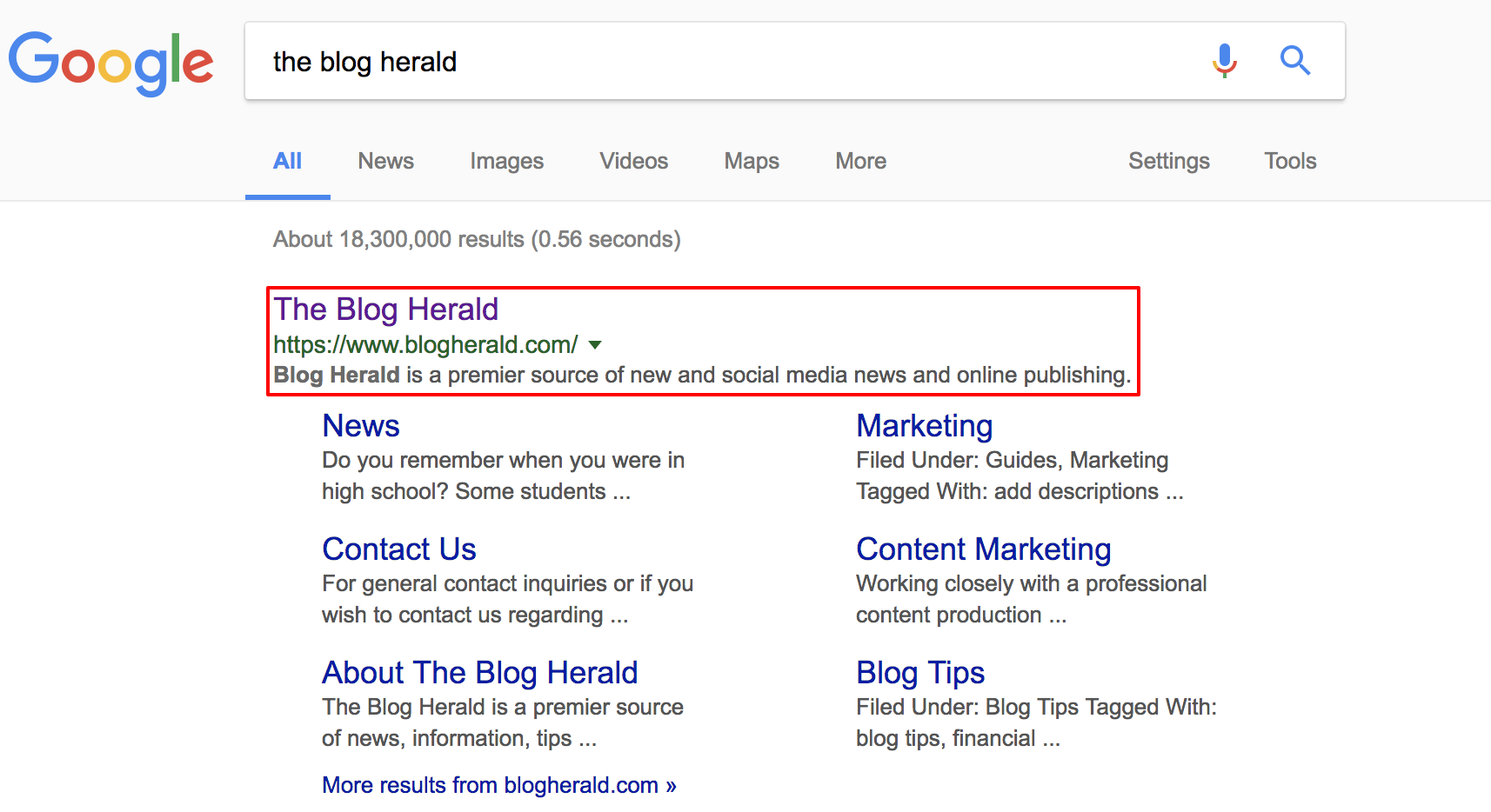How Will Google’s Longer Snippets Impact SEO?

The SEO world was shaken to the core in March 2017, when Google released its Fred update causing countless websites to experience a dramatic plunge in the traffic. The search engine giant, which controls 65% of the market share, isn’t done with this year’s surprises. In November, a significant drop in the number of featured snippets could be noticed, while more “knowledge panels” were introduced.
Just as we began to suspect that the influence of these rich answers was in decline, Google proved us wrong. In December, the company confirmed another game-changing rule which would increase the length of featured snippets to 320 characters. No wonder that this latest development will have a significant impact on SEO, especially bearing in mind that the future of search lies in voice search.
[bctt tweet=”How Will Google’s Longer Snippets Impact SEO?” username=”blogherald”]
Featured snippets 101
It’s a truth universally acknowledged that Google’s main idea is to provide users with the most useful and relevant information, which is why there are more than 200 factors whose purpose is to identify the best content and offer the most accurate answer to any question asked.
In an attempt to additionally enhance user experience and improve the efficiency of the SERPs, featured snippets have been developed, and they’re basically short, precise answers to the users’ questions, displayed in a box above all the results on the page, together with a link to the page, the page title, and URL.
This way, there’s no need for users to browse through all the results and waste time clicking on various links, since Google, practically, singles out the one that hits the bulls-eye.
Usually, featured snippets are used in how-to searches, or queries that require step-by-step guides. The importance of featured snippets for your SEO efforts is best illustrated by a stat saying that the first page of the SERPs claims almost 92% of the traffic, while the top spot garners a whopping 32.5%.
Now, in the light of this information, it’s clear what featured snippets, also known as the #0 ranking position, could do for boosting your website’s traffic and popularity.
How to get featured snippets?
This is a million dollar question, and we have to be honest and say that this process can be pretty challenging. Before we proceed to the most effective methods, it’s important to be aware that there are no guarantees that even the websites which optimize their meta descriptions and do everything by the book, will have their snippet featured.
Still, it’s worth trying as there’s a lot at stake. Here are some suggestions:
- Adding structured data is the essential precondition for even standing a chance to get featured snippets. However, this has to be done very carefully, because there are strict guidelines that have to be followed. In case that markup doesn’t meet Google’s standards, rich snippets from the website in question won’t appear.
- Identifying some of the most common questions in a niche and addressing them in a helpful manner will certainly be noticed by both people who conduct the related searches, and by Google’s crawlers. Of course, the search engine will take only top quality content into consideration, so it’s crucial to bring some real value to users.
- Using keywords and a full question that the content is trying to give an answer to in one of the header tags can improve the chances of getting a featured snippet. Besides that, this practice will show potential visitors what the web page is about, and attract their attention.
Size matters
Extended word count, paired with some new guidelines will require SEO specialists to find a new way to the top of the SERPs. Regular snippets, also known as meta descriptions, used to be limited to 165 characters, and since the beginning of December, their size almost doubled, which gives SEO specialists more space and opportunities to optimize content and score a better position, right?
Well, not really. If we’re observing this from the average user’s point of view, then this change is a great thing since both featured snippets and meta descriptions won’t get cut off in the middle of a sentence, leaving things unsaid, and prompting the user to enter the website in order to read a complete answer. Now you can see where this is going.
From the SEO perspective, longer snippets basically mean that users will get concise answers to questions from their queries and that sometimes they won’t have to bother to visit the site in order to find out more. Here are the most significant effects this word count extension will have on SEO:
- Marketers will have to try and find the balance between giving as accurate and useful answers as possible, thus revealing essential points of their content, and enticing visitors to enter their website despite having the information they need in snippets. This will have to be extremely subtly done, as Google’s main concern is providing value to users which means that it will reward websites that are willing to go that extra mile and in a way trade their own clicks for the sake of the improved customer experience.
- Search results for less complex searches will most probably suffer a drop in click-through rates given that almost all relevant information will be shown in featured snippets. On the other hand, queries on more serious topics will most likely benefit from this, as longer descriptions usually attract more attention.
- Pages that have lower ranks will be hit hard with these new rules, as there will be no reason for users to scroll down, let alone go to the second or third page of the SERPs when Google will serve the best answer right before their eyes.
The bottom line is that CEO efforts most probably won’t be as effective as they used to, and lower click-through rates can be translated into fewer conversions and, in turn, lower profits. Understandably, website owners are worried about this, but fortunately, there are methods that can be used in order to override the negative impact of Google’s new rules and regulations. With the help of some useful CRO tips, it’s possible to increase conversion rates as well as revenue without increasing the traffic.
The voice of change
OK, Google, will voice replace typing in search queries? According to Kleiner Perkins Caufield & Buyers, a VC company, it’s very likely that this will happen soon, and the company’s annual report on the internet trends states that voice search accuracy is becoming increasingly accurate. In 2016, 20% of all mobile searches were voice searches, and it’s estimated that by 2020 that number will hit 50%. However, if we take into consideration virtual assistants such as Siri, Amazon Echo, or Cortana, that percentage is much higher.
This trend has profoundly affected SEO and it will effectively kill short tail keywords. Needless to say, that SEO strategies will have to adapt in order to keep pace with the latest developments, which means crafting more natural, conversational keyword phrases, and long-tail keywords. The thing with featured snippets and voice search is pretty straightforward in the sense that in such cases, users who opt for a verbal reply won’t be presented with a number of results. Instead of that, they will be read a featured snippet. Now, with these new guidelines and changes, it’s essential to update meta descriptions accordingly and stay on top of things.
Among the factors that should be considered for improving chances of landing a featured snippet box are:
- Using long tail keyword phrases. There are several methods to identify how people are formulating their voice queries for a particular question as well as discover most frequently used long tail keyword phrases. Using keyword tools can be a good way to start, but one of the best methods is recording the exact questions that users ask customer support representatives, and using them for optimization.
- Content optimization. Having clear and concise answers to all these above-mentioned questions is a must, but it’s obvious that all these topics should be expanded and enriched with additional information that searchers could find useful. Since everything revolves around answering questions, it’s a good idea to structure the content by integrating a Q&A style, as such a format is more likely to be selected for a featured snippet. Another useful trick would be enriching the textual content with images, graphs, and charts since more than a third of featured snippets contain an image.
- Optimization for mobile. It’s only logical that people will mainly use voice search on their mobile devices. For this reason, having a mobile-optimized website is mandatory, and the extent to which Google appreciates this functionality is perfectly illustrated by its mobile-first index that will most probably be introduced in 2018.
- Local searches. These types of search are usually performed on mobile devices, which is why having complete and updated contact information is essential so that Google can crawl the website more easily and find relevant information.
Even though it seems that new, longer featured snippets will rob websites of their traffic, click-through rates, and subsequently revenue, they’re yet another Google’s attempt to ensure that users get the best and most accurate answers to their questions. Websites that manage to comply with these updated guidelines will eventually be able to climb to the top of the SERPs and make up for the initial setback in CTRs and revenue.
Author bio: Nate Vickery is a marketing consultant and an online author mostly focused on startups. He is also the editor at Bizzmark Blog and an author on The Next Web.





Voice Search is definitely growing – and as we human beings are somewhat “made” to spend as less energy as we can, this shouldn’t be a surprise: it will be interesting to look at the rise of VSO (Voice Search Optimization) and VAO (Virtual Assistant Optimization).
I remember watching Rand Fishkin’s Whiteboard Friday clip covering this topic, and this article was sort of a “refresher course”. Really enjoyed it, a great read indeed.
P.S. I am a fan of Bizzmark Blog!